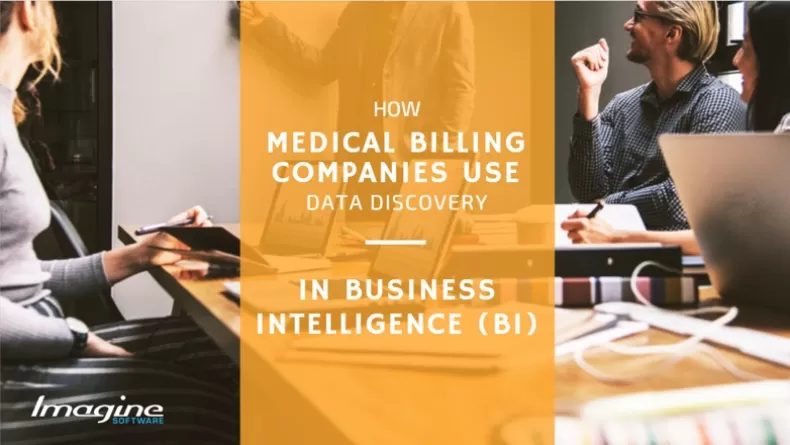In medical billing, we often talk about the importance of reporting and business intelligence for finding opportunities to reduce cost and increase revenue. Whether you’re a medical billing manager or the owner of a billing company, everyone employed by your company benefits when given access to data and reports related to their job performance. With that in mind, I’d like to take a step back and talk about the process that goes into creating those reports, called data discovery.

What is Data Discovery?
Data discovery is the process of collecting raw data from various sources, consolidating it into a single source, and converting it into useful information in the form of reports and visualizations. The usefulness of information is identified through recurring trends, anomalies, or predictive analytics broken down by factors like region, office, or procedure.
Data discovery can be demanding for medical billing managers when you’re accountable to both your management team and clients. Fortunately, client needs are like management needs in many ways. At a high level, clients want to see a lot of productivity reports and net gross collections, and so do billing companies. They need to know what you’re working on, changes in their revenue, and reassurance that your work is having a positive impact on their ROI.
Why is Data Discovery Important?
Data discovery is the first step into a more data-driven approach for monitoring your company’s and clients’ performance. Instead of reacting to the needs of your manager or client after the fact, a data discovery approach considers the goals and challenges of a company before building out a system for collecting and delivering the most useful information. This approach utilizes the full value of structured data to improve decision-making, optimize operational processes, and fuel new business.
Business analytics to drive growth and show value to your clients
Data discovery helps remove some of the biases and assumptions built into reports people create, helping them focus more on the things that practice owners and medical billing managers can control. Steps in data discovery include:
- Collecting and preparing data -- This step can take a lot of time because of all the different business applications used by multi-specialty medical practices. Collection and preparation is traditionally a manual process that begins with extracting data every month, structuring it into a common format, and aggregating it into a central database. Today, the best business intelligence software largely automates this process.
- Visualization -- Using visuals like graphs and dashboards to remove noise from data and highlight what’s useful information; visualizing data helps billing managers identify areas that need improvement, helps business owners understand which procedures to focus their attention, and can predict changes in the resulting revenue.
- Advanced analysis -- Manipulating data in ways to uncover relationships between two or more data points at any given point in time; tasks include segmentation, correlations, and forecasting future value.
What Are the Best Uses for Data Discovery?
Here’s a look into some of the ways medical billing companies are using the data discovery process in business intelligence solutions to drive profitability, reduce waste, and create competitive advantage for themselves:
- Improved operational efficiencies -- Billing companies and healthcare organizations need to be as lean as possible. Data discovery can be used to analyze a company’s operations for ways to reduce ongoing costs and maximize existing resources. For example, comparing your payer mix with the number of similar claims being processed by a certain payer as well as the amount of revenue you stand to receive will let you know where to prioritize your resources. Over time, you may notice a trend of similar claims being processed across multiple practices and can use that information to negotiate better payer rates.
- Improved services and patient procedures -- Data discovery can track individual revenue streams to determine which services and patient procedures drive revenue and which are not. For example, a monthly report of collection trends may show a spike in certain laboratory tests being performed by pathology groups at certain times of the year. This information could be used to attract patients who typically receive the test the same time each year.
- Transparency with clients and team members -- Medical billing companies should be able to supply practices with comprehensive performance reports at the click of a button. Provide customized reports to every client based on their unique challenges and performance focus.
- Expertise -- Medical billing managers should be knowledgeable in how to approach troublesome denials. For example, denial rate gives billing companies data between all public and private payers and compares which provide the highest or lowest rate of denials for certain procedures. Once a procedure has been successfully adjudicated, the same process can be applied to the same procedure and payer in the future.